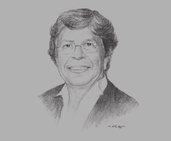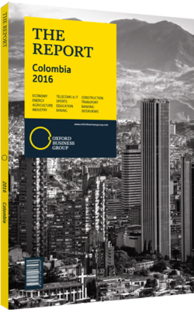Arturo García Rosa, President and Founder, South American Hotel & Tourism Investment Conference (SAHIC): Interview

Interview: Arturo García Rosa
What are the prospects for attracting more high-end tourism to Colombia?
ARTURO GARCÍA ROSA: High-end tourism is a very attractive, but also very demanding, sector. Generally speaking, high-end consumers do not buy a first-class seat, the best hotel suite or rent a limo; rather, they look for the whole experience. It is the sum of the small details that makes it a high-end experience. As such, high-end tourism requires a lot of effort from the people who offer the services, those who provide them, and even those who, without knowing it, are involved in the customer experience. As in other countries in the Andean region, Colombian operators are strongly committed to high-end tourism. It is an exceptionally demanding market segment, and while fairly constant in terms of volumes and season, it is still subject to ups and downs caused by external factors, such as economic variables.
How can the sector diversify its offering?
ROSA: As for many other countries in the region, the medium segment, or what the industry calls the select service segment, offers great opportunities for the Colombian tourism industry. There are plenty of destinations that cater to corporate and leisure visitors. Resorts and spas are another area with great potential that still has room for development. This segment could leverage the country’s natural resources and further diversify the local tourism offering.
What new infrastructure will be needed to attract more meetings, incentives, conferences and exhibitions (MICE)?
ROSA: Colombia has been working hard to enhance its MICE offering. Since the Cartagena convention centre was restored, the infrastructure to support MICE events has seen significant improvements. The promotions and conventions segment needs two key elements to be competitive. First, it requires an efficient communications strategy, with consistent flight frequency to attract visitors from all over the world. Although connectivity has improved considerably over the last decade, there is still room for growth. This is being pursued through the air and road infrastructure projects that are currently under way.
Second, venues need to think about what happens outside of the convention, regardless of where it takes place, in terms of the after-work leisure offering for attendees. To this end, the venue should provide leisure options and other attractions. Cartagena has already developed a wide range of options, and this model should help to inspire other urban areas in Colombia.
What initiatives should be implemented to incentivise more travellers to extend their stay, particularly those in the business segment?
ROSA: The leisure tourism segment needs to be developed further. In recent years, corporate tourism has grown exponentially thanks to Colombia’s stable economy and investment opportunities. This growth is projected to continue, so naturally we expect leisure tourism to expand as well. Business-related travel is still the main source of tourism for the country, and Colombia has just started to operate some international-calibre hotels, which are mostly frequented by business travellers. Having a wide variety of world-class hotels will definitely increase the length of stay of corporate travellers. In terms of leisure destinations, without a doubt the greatest attraction in Colombia is Cartagena. However, the notion that this is the only such destination for either business or leisure travellers needs to change, because Colombia has a wide variety of leisure offerings.
You have reached the limit of premium articles you can view for free.
Choose from the options below to purchase print or digital editions of our Reports. You can also purchase a website subscription giving you unlimited access to all of our Reports online for 12 months.
If you have already purchased this Report or have a website subscription, please login to continue.

